The past twenty years have shaken the Lebanese State’s pillars — its economy, its geographical borders, its political and social system, but also its residents. The more chaotic events hit a country, the more the people who live in that country look for the basic necessities of life elsewhere. Apart from a stable economy, security is a fundamental necessity. It is therefore pertinent to ask ourselves how the war-like events have affected the Lebanese residents of Lebanon.
Lebanese refugees distribution
UNHCR data allows to identity the number of Lebanese refugees between the year 2000 and the year 2020 (Fig. 1, 2, 3). Many factors can explain the numbers for each year.
The starting year 2000 was the year Israel withdrew its occupation forces from South Lebanon. As a result of Liberation, some Lebanese people who were active in the “South Lebanon Army”, also known as the Lahd Army, decided to leave Lebanon in fear of legal prosecution.
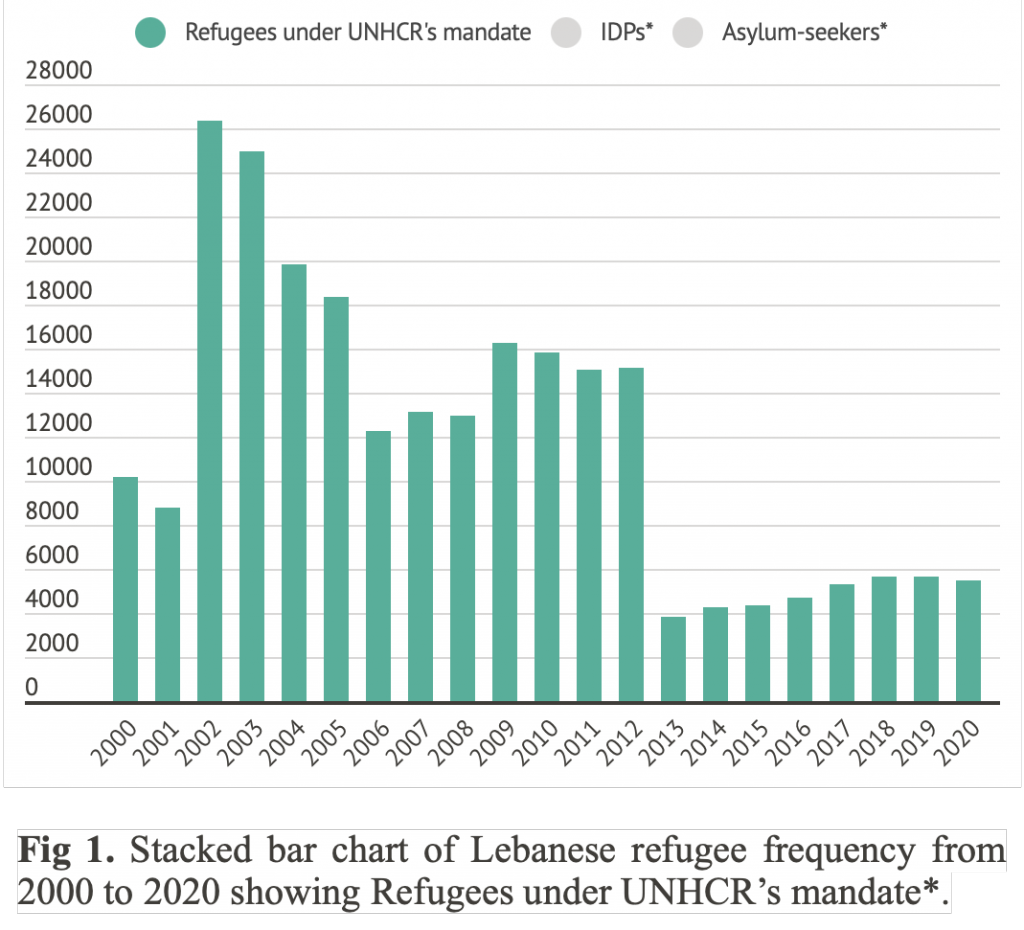

The political situation in Lebanon was hectic the following years, the country having been subject to foreign occupation for over 20 years and the State having had no or very little control over its territory during that period. The flux of refugees until 2004 can be explained by these elements as well as political instability.
Starting the year 2004, a series of assassinations started hitting Lebanese personalities in Lebanon, which characterized a period of heated events and insecurity in the country. The key event during that period was the assassination of the former Prime Minister Rafic Hariri, which changed the course of Lebanese political modern history. These assassinations or assassination attempts forewent until the early 2010s and were key factors in the movement of the Lebanese people.
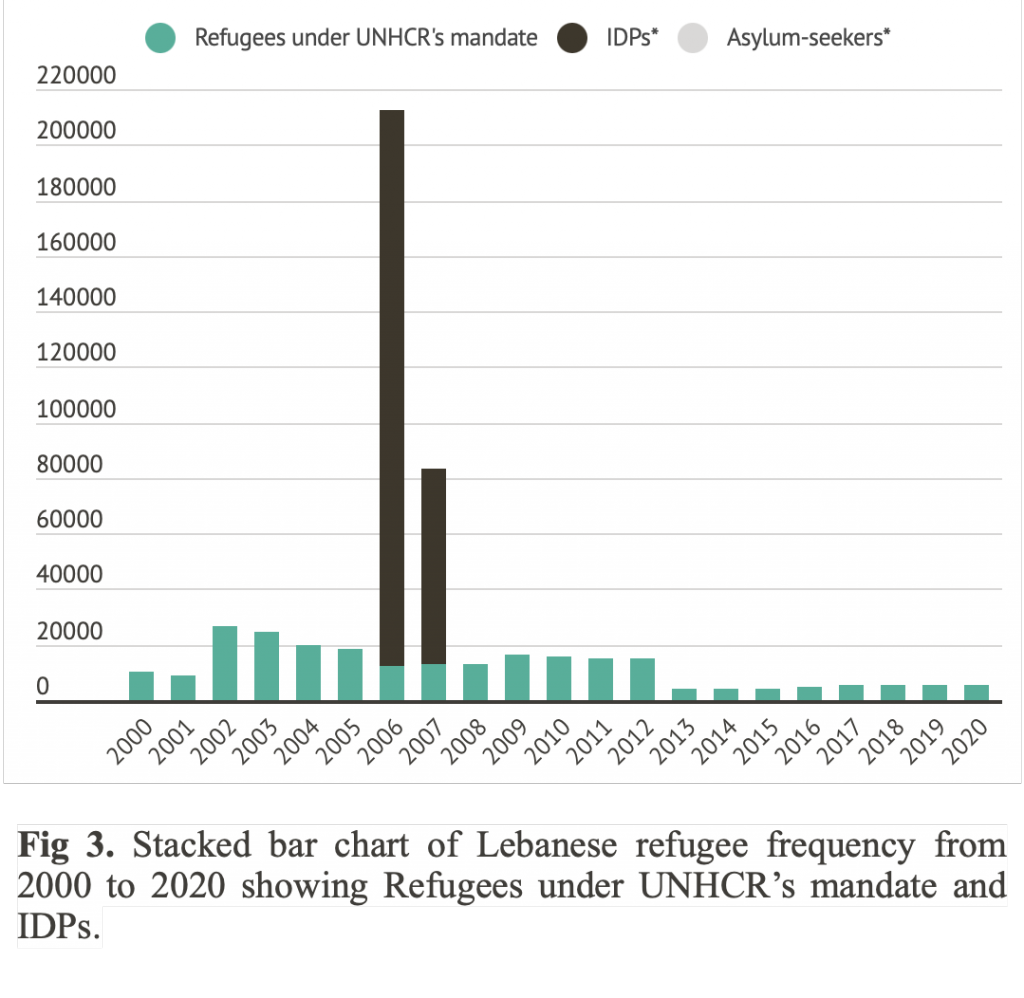
Another key factor during that period was the 2006 war between Lebanon and Israel which resulted in the displacement of many residents of Lebanon, and mainly of its Southern part. Internally Displaced Persons (IDPs)are residents who are forced to leave or abandon their homes without crossing an internationally recognized border. This was the case of the residents of South Lebanon who were forced to flee the south and those of sensitive regions in Beirut, the destination being the northern parts of Lebanon that Israel was not targeting.
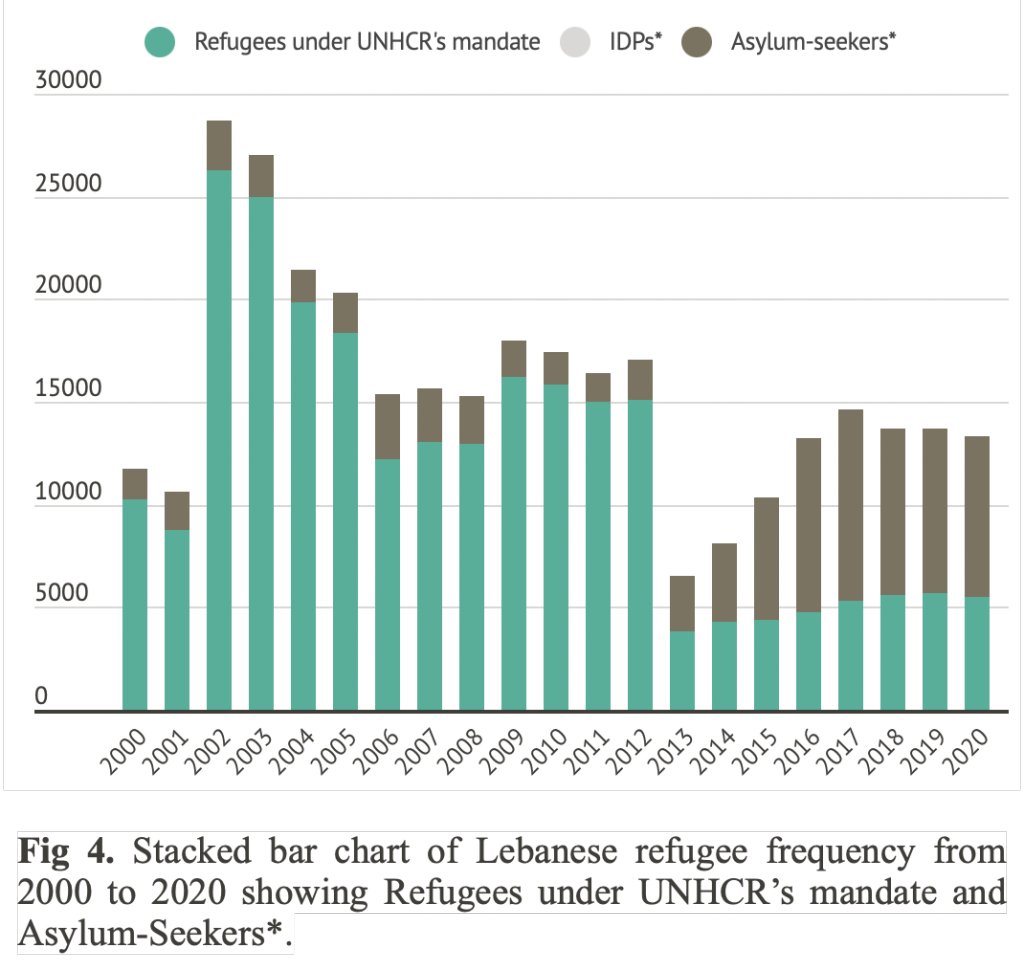
Starting the year 2013, a series of bombings and suicide attacks shook Lebanon by the will of ISIS that was starting to be more active in the neighboring State of Syria. This same period is characterized by an increase of asylum-seekers in comparison to the precedent period (Fig. 4). Asylum-seekers are individuals who say they are a refugee, but whose claim has not yet been definitely evaluated.
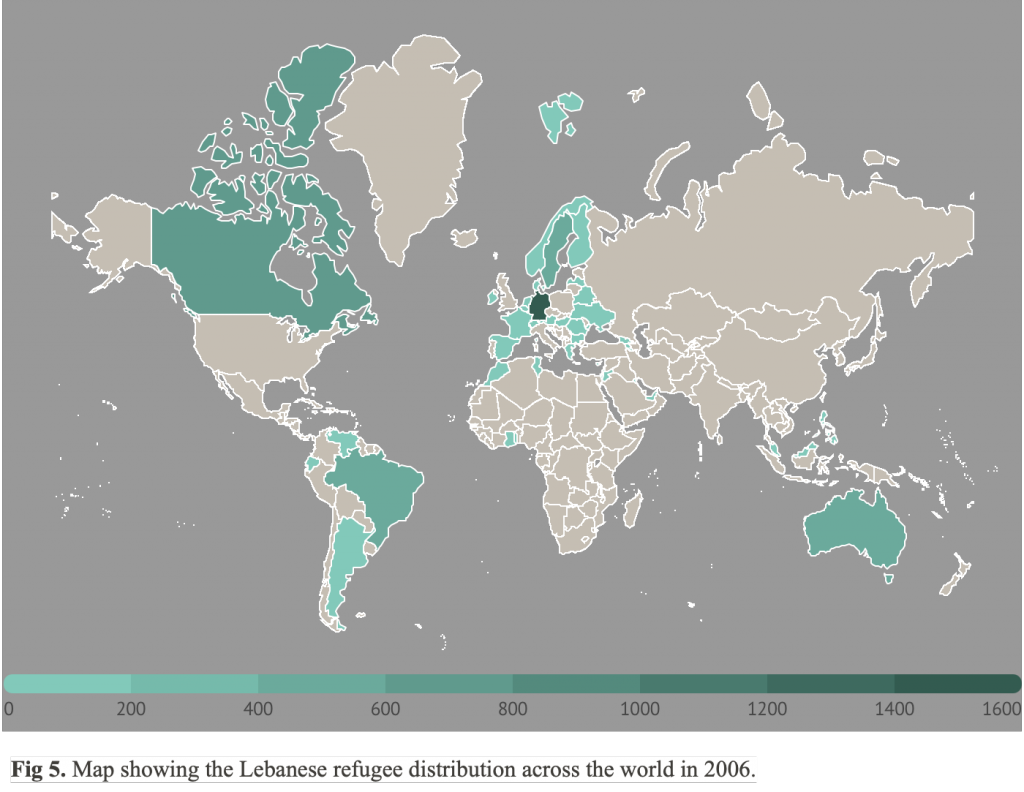
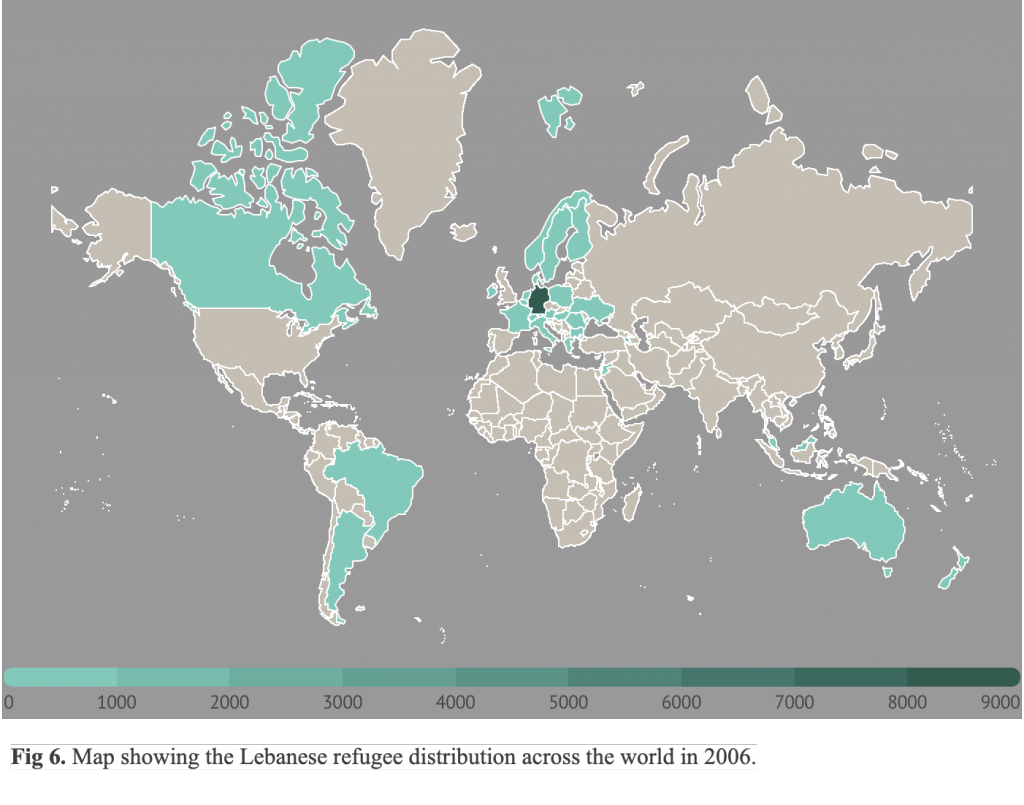
Comparison between the 2006 war and the 2020 Beirut Port explosion
In times of crisis, the residents of Lebanon leave for foreign countries, sometimes further than just neighboring countries. During the 2006 war, the destination countries varied from European to American countries (Fig. 5). The numbers vary between the nature of the crisis as well. For instance, Germany hosted over 9000 Lebanese refugees during the war, but 1775 refugees in 2020 (Fig. 6). In 2006, the top hosting countries were Germany, Canada, the United States, Sweden and Australia (Fig. 7). This did not really change in 2020, the top 5 hosting countries after the Beirut Port explosion being Germany, Canada, Australia, Brazil and Sweden (Fig. 8). An interesting issue here is the fact that the neighboring countries of Lebanon were not the countries that welcomed the most refugees. The numbers for 2020 are also affected by two other; major events that hit the years 2019 and following, which were the Covid pandemic and the economic crisis that hit Lebanon towards the end of 2019.
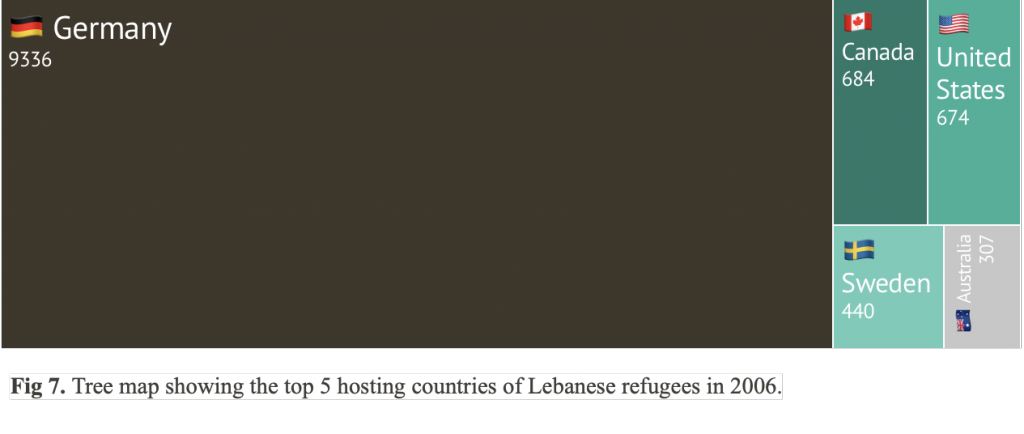

This data shows that war-related events push people to leave the country and become refugees whereas economic crisis and government failures will most probably lead to immigration rather than seeking refuge in other countries. The difference between an immigrant and a refugee is that a refugee is, according to the UNHCR definition, a person who flees war, violence, conflict or persecution and crosses an international border to find safety in another country — often with little more than some clothes on their back, leaving behind homes, possessions, jobs and loved ones. This is a fundamental difference with immigrants who usually leave their country of origin to start a new life permanently in another foreign country, without necessarily fleeing war-like events. Refugees will be people who are unable or unwilling to return to their country of origin, according to the 1951 UN Refugee Convention.

There is an absence of data regarding the demographics of the refugees in 2006 (Fig. 9), most probably because it was a period of war and chaos which can explain the lack of data-gathering. In 2020, the data shows that many refugees were also infants aged between 0 and 5 years (Fig. 10). There is no similar data for 2006. It can be concluded that, even though families fled Lebanon for sure in 2006, the data collection illustrates that entire families became refugees in 2020.

Another interesting element to take into consideration after analyzing the data is the fact that there are more male than female refugees (Fig. 11 and 12).
The visualization of data has helped us direct the questions to pertinent aspects of the study, such as the proximity of hosting countries to the country of origin, the demographics and lack of data during the 2006 war, as well as the variety of movement forms that have affected the Lebanese people (refugees, IDPs, asylum-seekers).
